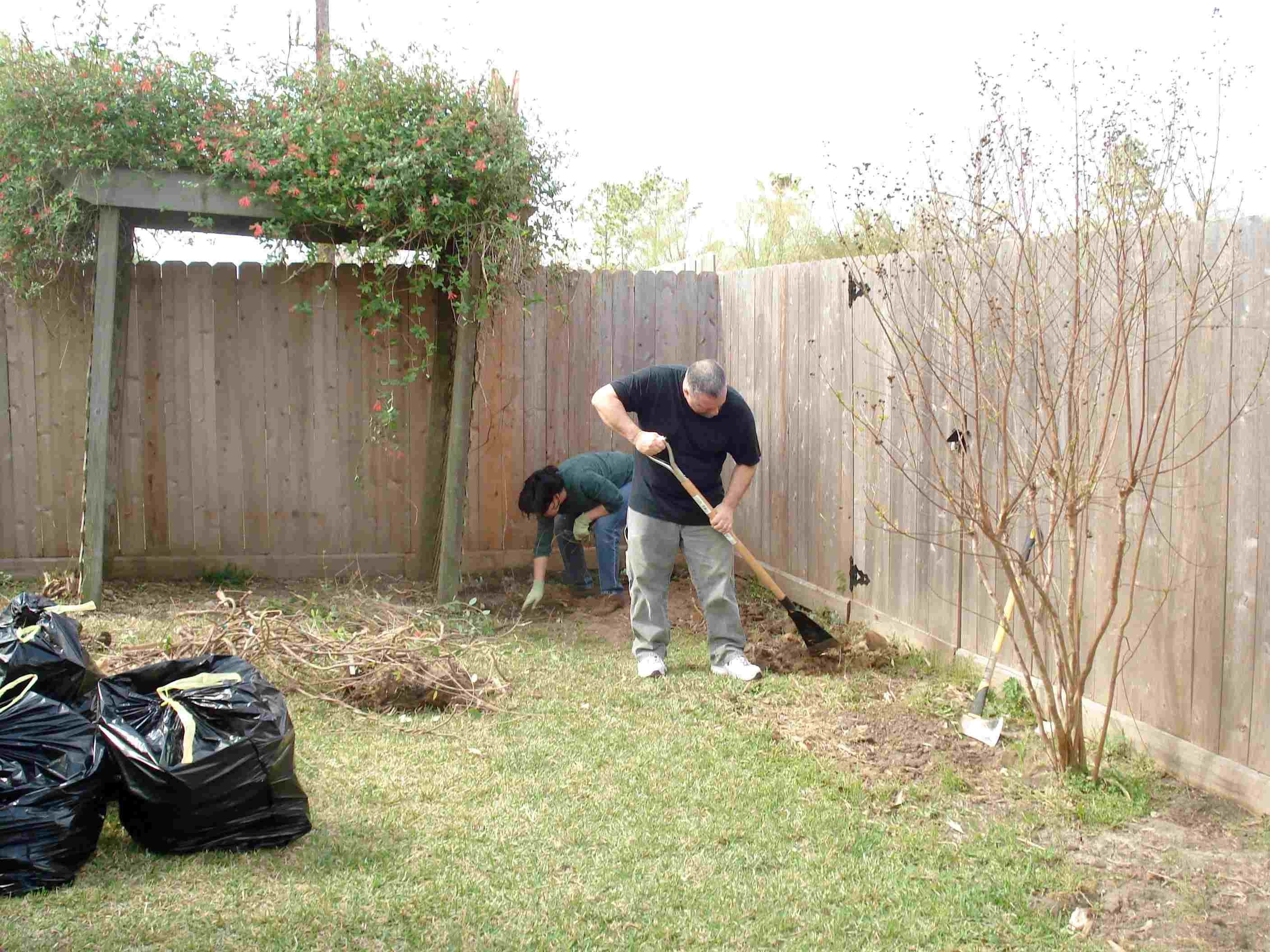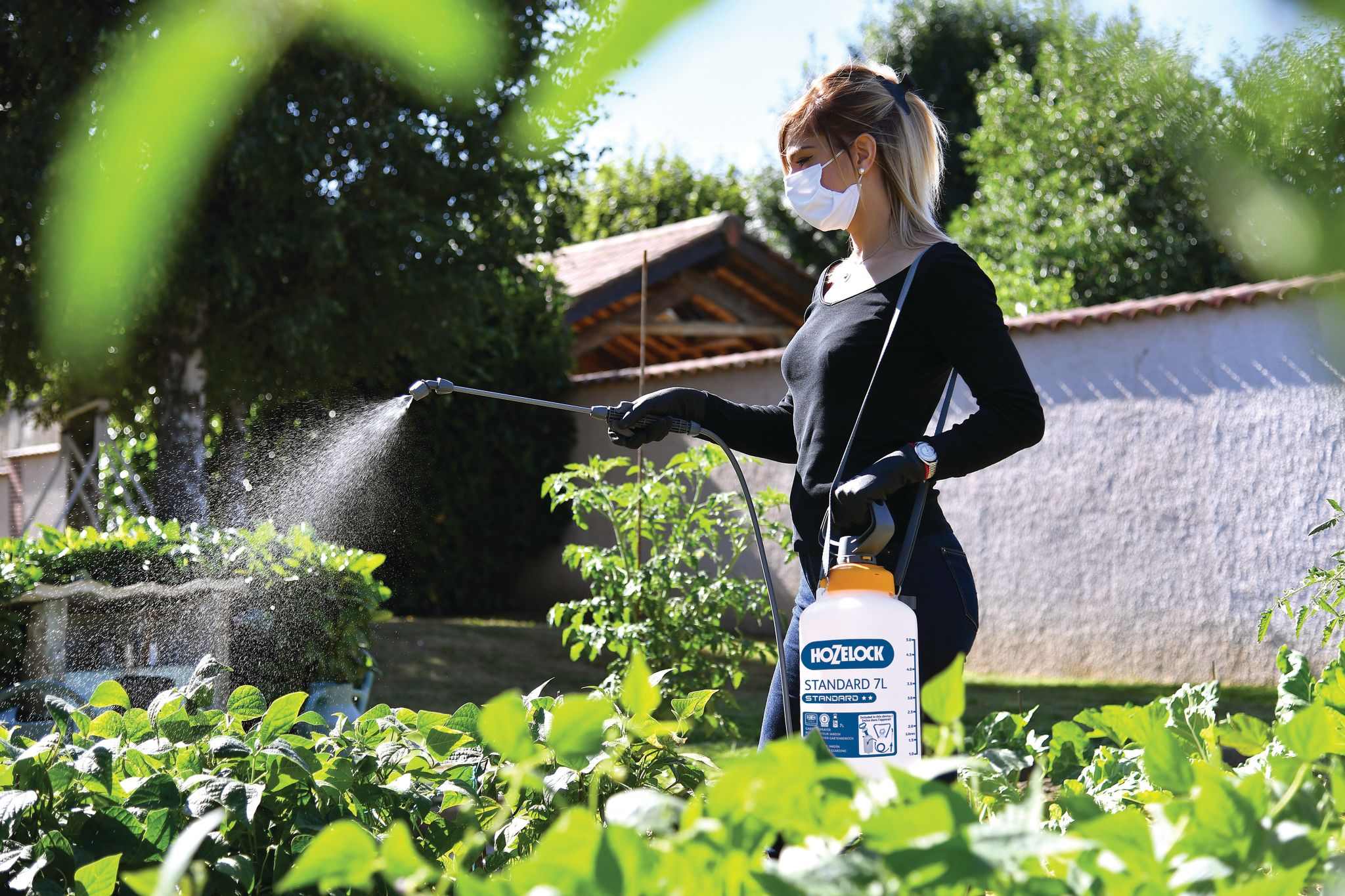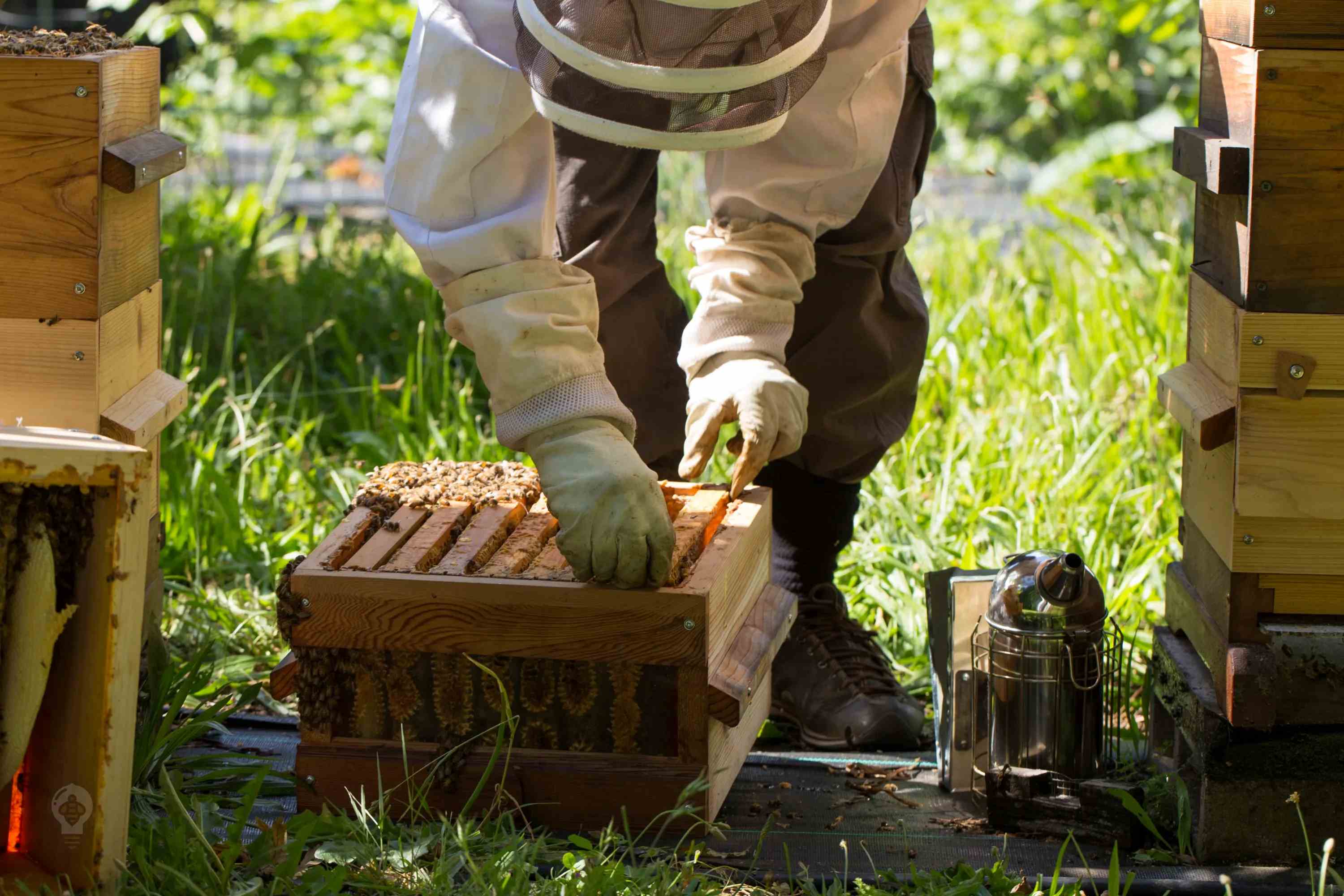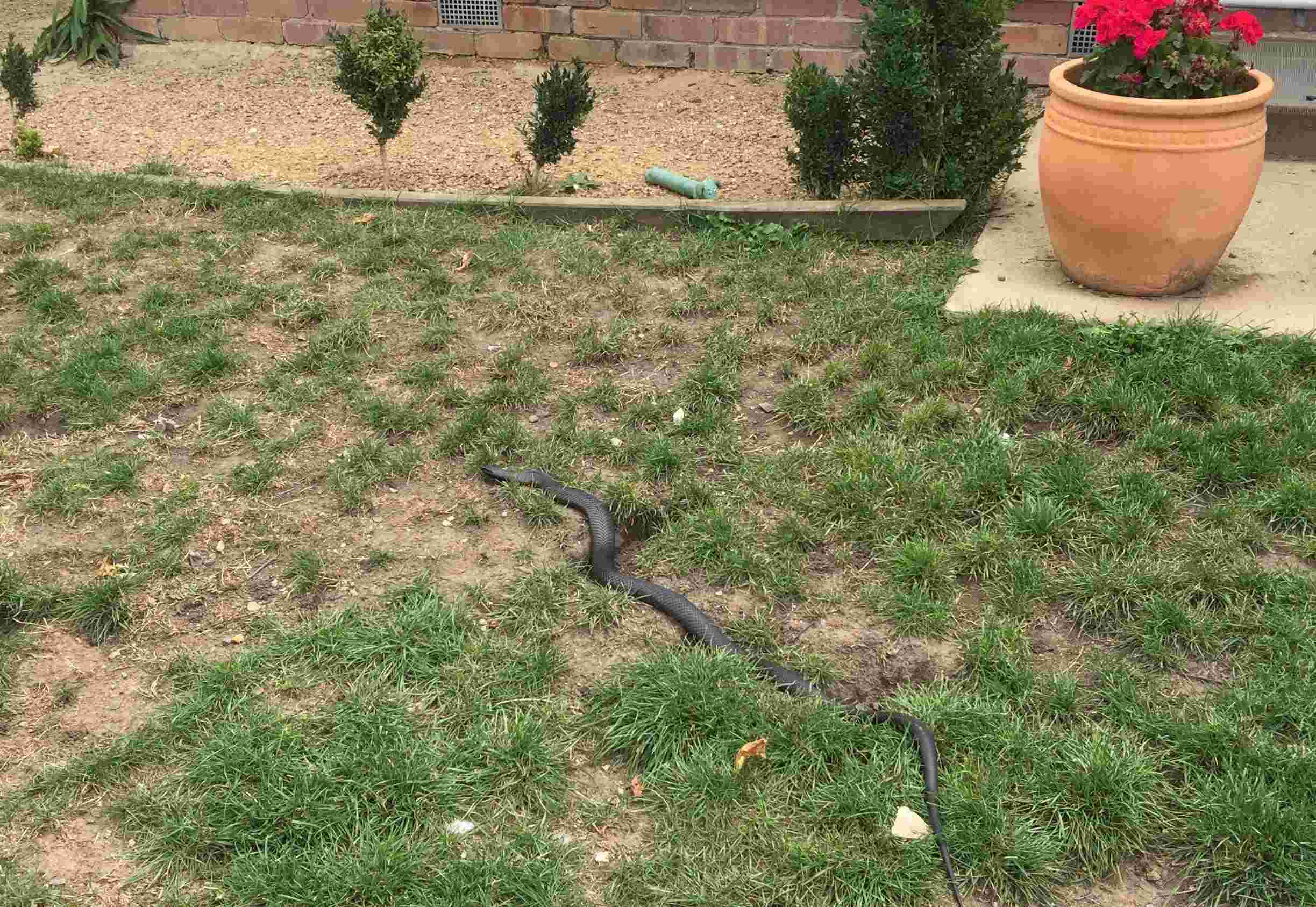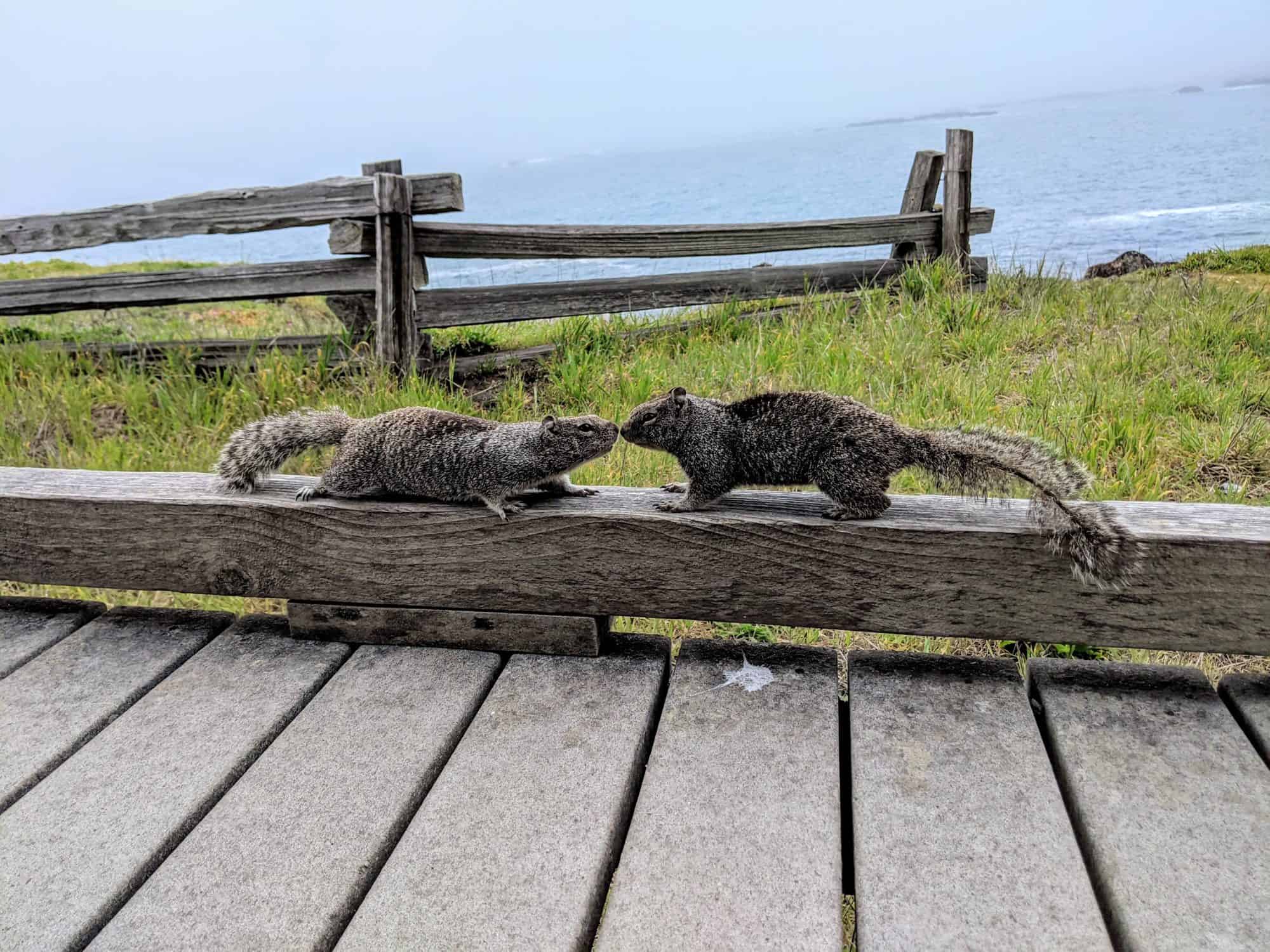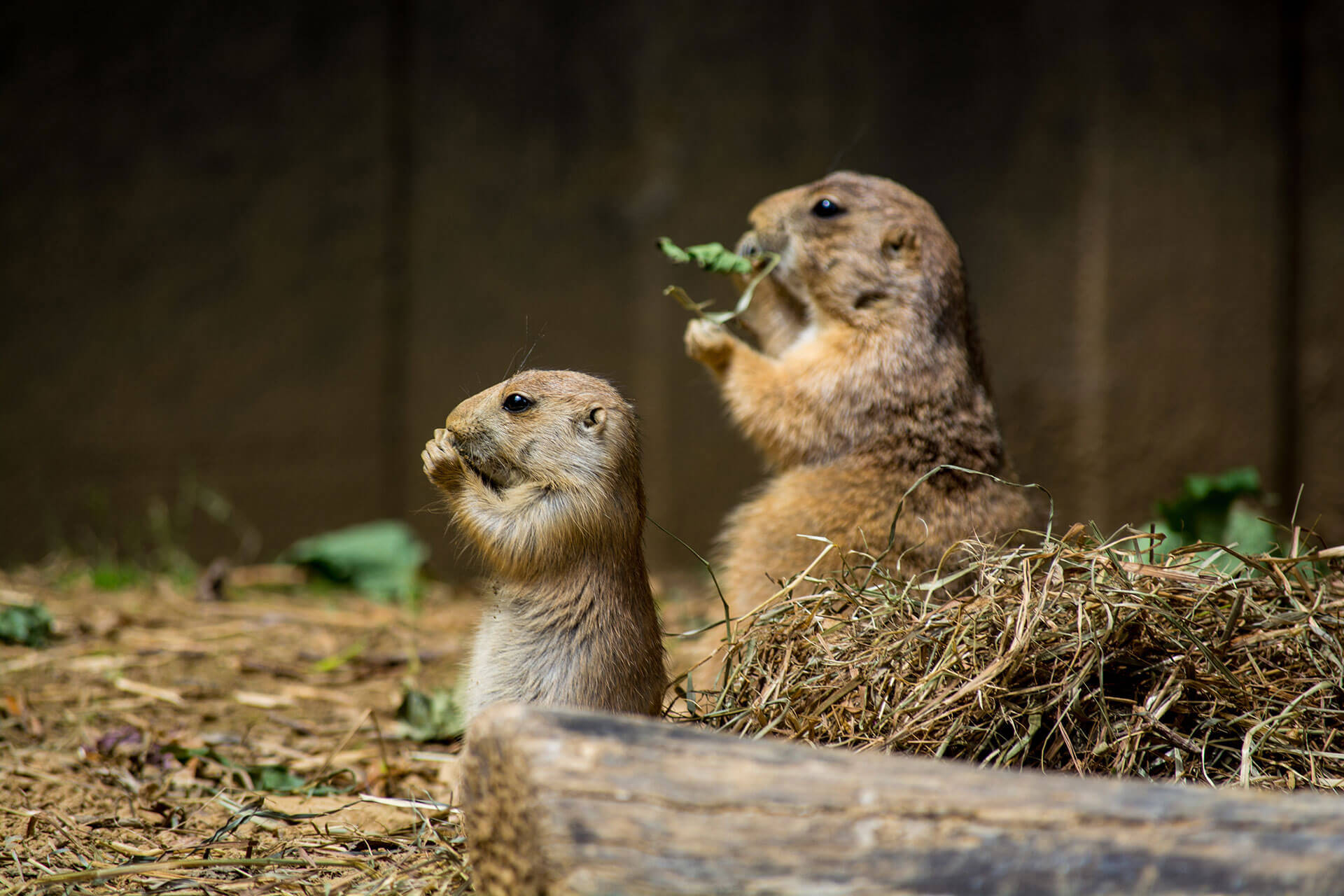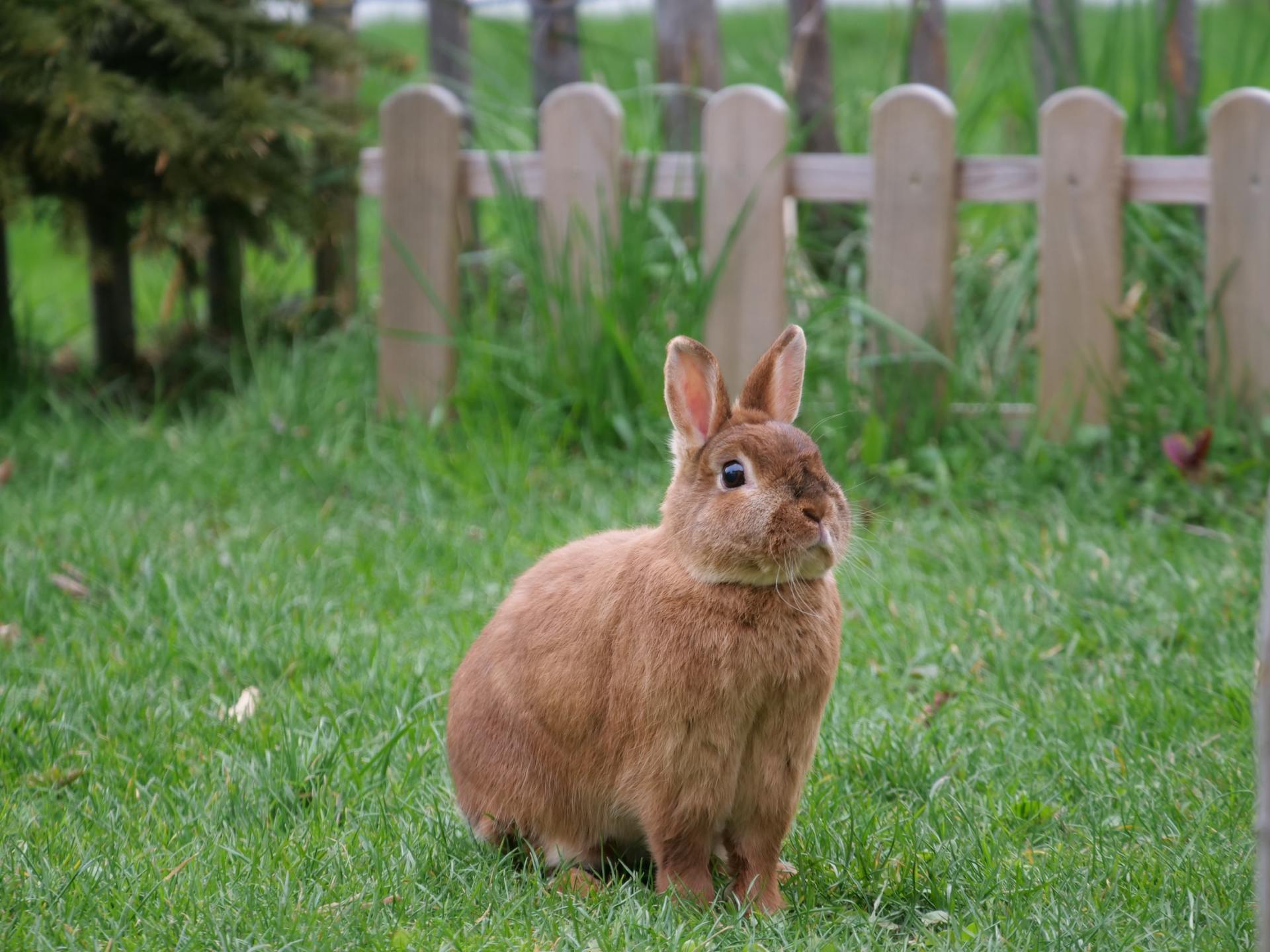Home>Gardening Tips and Tricks>How To Get Rid Of Backyard Mushrooms


Gardening Tips and Tricks
How To Get Rid Of Backyard Mushrooms
Modified: January 22, 2024
Looking for effective ways to solve the problem of backyard mushrooms? Learn how to get rid of them with these simple and practical tips.
(Many of the links in this article redirect to a specific reviewed product. Your purchase of these products through affiliate links helps to generate commission for Chicagolandgardening.com, at no extra cost. Learn more)
Table of Contents
Introduction
Welcome to our comprehensive guide on how to get rid of backyard mushrooms. If you have ever noticed mushrooms popping up in your backyard, you may be wondering why they appear and how to remove them. While mushrooms can add a touch of whimsy to a forest or a garden, they can become a nuisance when they start growing in your yard. If left unchecked, they can multiply rapidly and become a permanent fixture in your outdoor space.
In this guide, we will explore the different types of backyard mushrooms, the causes of their growth, and the potential issues they can pose. We will also provide step-by-step instructions on how to remove these mushrooms effectively and naturally. Additionally, we will discuss preventive measures to keep mushrooms from reappearing in your yard.
Before we dive into the specifics of removing and preventing backyard mushrooms, it’s important to understand that the presence of mushrooms in your yard is not necessarily a cause for alarm. In fact, mushrooms indicate that your soil is healthy and teeming with nutrients. However, it is essential to control their growth, as some species of mushrooms can be toxic to pets and humans.
Whether you have a small backyard or a sprawling garden, this guide will equip you with the knowledge and techniques to address the issue of backyard mushrooms effectively and safely. Say goodbye to those unwanted fungi and reclaim your outdoor space!
Understanding Backyard Mushrooms
Before we delve into the steps to remove backyard mushrooms, let’s first understand what they are and how they come to be. Mushrooms are fungal organisms that comprise the visible, above-ground part of a larger underground fungal network known as mycelium. They play a crucial role in nature, aiding in the decomposition of organic matter and facilitating nutrient cycling.
Backyard mushrooms come in a wide variety of shapes, sizes, and colors. Some are small and inconspicuous, while others can grow to be quite large and eye-catching. They may have caps, stems, gills, or pores, and their appearance can change drastically depending on the species and the environmental conditions.
It’s important to note that not all backyard mushrooms are harmful. Many are harmless and even beneficial. However, there are also varieties that can be toxic if ingested or cause allergic reactions in sensitive individuals. This is why it is important to exercise caution and take steps to manage their growth.
Mushrooms typically thrive in damp, shady environments with organic material, such as decomposing wood or plant matter. They rely on moisture and nutrients to grow and reproduce. Understanding the conditions that promote mushroom growth can help us better prevent and eliminate their presence in our yards.
Furthermore, it’s worth noting that mushrooms are just the fruiting bodies of the fungal organism. The main body, the mycelium, is usually hidden beneath the surface of the soil or decaying matter. This mycelium network connects the mushrooms and is responsible for absorbing nutrients and breaking down organic matter.
Now that we have a basic understanding of backyard mushrooms, let’s explore the common types you may encounter in your yard.
Common Types of Backyard Mushrooms
Backyard mushrooms come in a variety of shapes, sizes, and colors. Understanding the different types can help you identify them and determine the best course of action for removal. Here are some common types of backyard mushrooms:
- White Button Mushroom (Agaricus bisporus): This is one of the most common edible mushrooms found in backyards. It has a rounded cap, white gills, and a thick stem. White button mushrooms are often cultivated commercially and are a popular ingredient in various culinary dishes.
- Shaggy Mane Mushroom (Coprinus comatus): This mushroom has a distinctive appearance, with a white, cylindrical cap covered in shaggy scales. As it matures, the cap turns black and starts to dissolve, giving it a unique ink-like appearance. Shaggy mane mushrooms are edible when young but should be consumed fresh as they become inedible once they start to decompose.
- Puffball Mushroom (Lycoperdon spp.): These spherical mushrooms come in various sizes and have a smooth or spiky outer surface. When mature, they release a cloud of spores when pressed or disturbed. Edible puffballs are white inside and should be consumed before they turn yellow or brown. It’s important to note that not all puffballs are edible, so proper identification is crucial.
- Fly Agaric (Amanita muscaria): This iconic mushroom features a bright red cap with white spots. It is often associated with fairy tales and is highly toxic if consumed. Fly agaric mushrooms are best admired from a distance and should never be ingested.
- Chanterelle Mushroom (Cantharellus spp.): Chanterelles are prized for their aromatic flavor and trumpet-shaped appearance. They have a vibrant yellow to orange color and a wavy, funnel-shaped cap. Chanterelles grow in mycorrhizal association with certain trees and are highly sought-after by mushroom enthusiasts.
These are just a few of the many types of backyard mushrooms you may encounter. Remember that proper identification is crucial before consuming any wild mushrooms. If you are unsure about the edibility of a particular species, it’s best to consult a mycologist or a knowledgeable expert to ensure your safety.
Causes of Mushroom Growth
Understanding the causes of mushroom growth in your backyard is essential for effectively managing their presence. Here are the primary factors that contribute to the growth of backyard mushrooms:
- Moisture: Mushrooms thrive in damp and moist environments. Excess moisture in your yard, whether from heavy rainfall, over-watering, or poor drainage, creates the ideal conditions for mushroom growth. Areas that retain water, such as low-lying spots or near irrigation systems, are particularly susceptible to mushroom colonization.
- Organic Matter: Backyard mushrooms rely on organic matter as a source of food and nutrients. Dead tree stumps, decaying roots, fallen leaves, and other organic debris provide the necessary nourishment for mushroom mycelium to develop and form fruiting bodies. The presence of such materials in your yard can contribute to mushroom growth.
- Shade: Most mushrooms prefer shady environments and are often found in areas with limited exposure to direct sunlight. Trees, shrubs, and structures that obstruct sunlight can create the perfect shady conditions for mushrooms to thrive. Pay attention to areas in your yard that receive minimal sun exposure or are constantly shaded.
- Soil Conditions: The composition and pH level of the soil can influence the growth of mushrooms. Some species prefer alkaline soil, while others thrive in acidic or neutral soil. Certain types of mushrooms also have specific soil preferences, such as those that favor sandy or loamy soils. Understanding the soil conditions in your yard can help you identify potential mushroom growth areas.
- Presence of Mycelium: Mushrooms are the fruiting bodies of mycelium, which is the underground network of fungal threads. If your yard has existing mycelium, it increases the likelihood of mushroom growth. Mycelium can be present in the soil or hidden beneath decaying matter, and it acts as the foundation for mushroom development.
It’s important to note that mushroom growth is a natural process and indicates a healthy ecosystem. However, if you find the mushroom presence unsightly or potentially harmful, addressing the underlying causes can help manage their growth effectively.
In the next section, we will explore potential issues that backyard mushrooms can pose and why their removal may be necessary.
Potential Issues with Backyard Mushrooms
While mushrooms are a natural part of the ecosystem and serve important ecological roles, there are certain potential issues that backyard mushrooms can pose. Here are some reasons why their removal may be necessary:
- Allergies and Toxicity: Some species of mushrooms can cause allergic reactions in sensitive individuals, ranging from mild skin irritations to respiratory issues. Additionally, certain varieties of backyard mushrooms can be toxic if ingested. It is therefore important to exercise caution, especially if you have young children or pets that may accidentally consume or come into contact with these mushrooms.
- Aesthetic Concerns: While mushrooms can add a touch of natural beauty to some landscapes, their presence may not always be desirable. Large clusters of mushrooms in a well-manicured lawn or garden can detract from the overall aesthetics of the space. If you prefer a more uniform and tidy appearance, removing mushrooms can help achieve that desired look.
- Competition with Plants: In some cases, backyard mushrooms may compete with plants for nutrients and resources. The mycelium networks associated with mushrooms can take up space and deplete available nutrients, potentially affecting the growth and health of nearby vegetation. Removing mushrooms can help alleviate this competition and promote the well-being of your plants.
- Safety Concerns: Mushrooms, especially when they grow in large numbers, can create a slippery surface that poses a slip and fall hazard, especially when wet. This is particularly important to consider if you have children or elderly individuals who may be more prone to accidents. Removing mushrooms can help reduce the risk of slips and falls in your backyard.
- Spread of Spores: Backyard mushrooms produce and release countless spores as a part of their reproductive process. These spores can disperse throughout your yard and neighboring areas, potentially leading to the colonization of more mushrooms. By removing mushrooms before they release their spores, you can help prevent their spread and limit future growth.
It’s important to note that not all backyard mushrooms pose the same level of risk or issues. Some may have minimal impact, while others can be more problematic. Therefore, it is essential to properly identify and understand the specific characteristics and behaviors of the mushrooms in your yard.
Now that we have discussed the potential issues that backyard mushrooms can pose, let’s move on to the steps you can take to remove them effectively.
Steps to Remove Backyard Mushrooms
If you have noticed a proliferation of backyard mushrooms and want to address the issue, here are some steps you can take to effectively remove them:
- Wear protective gear: Before starting the removal process, it’s essential to protect yourself. Wear gloves, long sleeves, and pants to avoid direct contact with the mushrooms, especially if you are dealing with potentially toxic varieties.
- Remove visible mushrooms: Gently pluck the mushrooms from the ground, taking care not to break the stems. Dispose of them in a sealed bag or container. This step helps prevent the release of spores and reduces the chances of spreading the mushrooms.
- Rake and remove organic matter: Remove any fallen leaves, decaying wood, or other organic debris that may be promoting mushroom growth. Raking the affected area helps disturb the mushroom mycelium and reduces their chances of reappearing.
- Improve drainage: If excessive moisture is contributing to mushroom growth, assess the drainage in your yard. Ensure proper grading and consider implementing measures like adding drainage pipes or redirecting water flow away from mushroom-prone areas.
- Address underlying issues: If mushrooms persist despite your removal efforts, there may be underlying issues that need attention. For example, if you have a dead tree stump, you may need to have it removed to eliminate a potential source of mushroom growth.
- Apply fungicides (if necessary): In cases where persistent mushroom growth is causing significant issues, you may consider using a fungicide. Follow the instructions carefully and choose a product specifically designed for mushrooms. It’s important to note that while fungicides can be effective, they should be used sparingly and as a last resort.
- Maintain good yard practices: Regularly maintain your yard by mowing the lawn, trimming shrubs, and removing fallen leaves. These practices help improve air circulation, reduce moisture levels, and minimize the conducive conditions for mushroom growth.
- Monitor and repeat as needed: Keep a close eye on your yard and monitor for any regrowth of mushrooms. If you notice new mushrooms appearing, repeat the removal steps to proactively address the issue.
By following these steps, you can effectively remove backyard mushrooms and take control of their growth in your outdoor space. However, it’s important to remember that mushrooms are a natural part of the ecosystem, and complete eradication may not always be possible or necessary.
In the next section, we will explore some natural ways to prevent mushroom growth in your backyard.
Natural Ways to Prevent Mushroom Growth
Preventing mushroom growth in your backyard is preferable to constantly having to remove them. Here are some natural methods you can employ to help prevent mushroom growth:
- Improve sunlight exposure: Since mushrooms prefer shady environments, increasing sunlight exposure in your yard can discourage their growth. Trim back overhanging branches, prune shrubs, and remove any structures that obstruct natural light. Creating sunnier conditions can make your yard less favorable for mushrooms to thrive.
- Enhance drainage: Excess moisture is a common trigger for mushroom growth. Improve drainage in your yard by addressing any pooling water or areas with poor water flow. Consider using rain barrels or French drains to channel water away from mushroom-prone areas.
- Amend soil pH: Some mushrooms prefer specific soil pH levels. If you consistently experience mushroom growth in your yard, consider performing a soil test. Based on the results, you can adjust the soil pH by adding amendments like lime for acidic soil or sulfur for alkaline soil. Creating less favorable soil conditions may deter mushroom growth.
- Remove decaying matter: Regularly remove fallen leaves, dead tree stumps, and other decaying organic matter from your yard. Mushrooms thrive on decomposing material, so eliminating these food sources can help discourage their growth. Use a rake or handpick debris, and dispose of it away from your yard or in a composting area.
- Aerate the soil: Aerating your soil helps improve air circulation and reduces moisture retention, making it less conducive to mushroom growth. Utilize a garden fork or aerating tool to create small holes in the soil, allowing for better drainage and reducing the likelihood of mushroom colonization.
- Apply organic mulch: Use organic mulch, such as wood chips or straw, in your yard. This type of mulch breaks down slowly, reducing the availability of organic matter that mushrooms feed on. Additionally, organic mulch helps regulate soil moisture levels, creating a less favorable environment for mushrooms.
- Promote healthy lawn and plant growth: Ensuring that your lawn and plants are healthy and well-maintained can help prevent mushroom growth. Regularly fertilize and water your plants, and mow your lawn at the appropriate height. Strong, healthy vegetation can compete with mushrooms for nutrients, reducing their chances of establishing in your yard.
- Use preventative fungal treatments: Consider using organic, preventative fungal treatments on susceptible areas of your yard. These treatments can help control fungal growth, including mushrooms, by targeting the underlying mycelium network. Follow the product instructions carefully and choose treatments that are safe for your plants, pets, and the environment.
By implementing these natural prevention methods, you can create an environment that is less conducive to mushroom growth. However, it’s important to note that complete prevention may not always be possible, as mushrooms are resilient and can appear under certain conditions.
Now that we have explored natural ways to prevent mushroom growth, let’s conclude our comprehensive guide on getting rid of backyard mushrooms.
Conclusion
Managing and preventing backyard mushrooms can be a challenging task, but with the right knowledge and strategies, you can reclaim your outdoor space and create a healthier environment. Understanding the causes of mushroom growth, the different types of mushrooms you may encounter, and the potential issues they can pose is crucial for effective removal and prevention.
By following the steps outlined in this guide, you can remove backyard mushrooms safely and efficiently. Wearing protective gear, plucking visible mushrooms, removing organic matter, improving drainage, and addressing underlying issues are key steps in the removal process. Regular maintenance practices and the use of natural methods, such as enhancing sunlight exposure, amending soil pH, and promoting healthy plant growth, can help prevent mushroom growth in the long term.
It’s important to remember that not all backyard mushrooms are harmful, and their presence can indicate a healthy ecosystem. However, if you have concerns about allergies, toxicity, aesthetic appearance, safety hazards, or the spread of spores, it’s important to take appropriate action to address the issue.
Always exercise caution when dealing with mushrooms, especially if you are unsure about their edibility. Consult a mycologist or a knowledgeable expert for proper identification and guidance before consuming any wild mushrooms.
By implementing the techniques and practices outlined in this guide, you can create a backyard environment that is less hospitable to mushrooms and enjoy a beautiful, mushroom-free outdoor space. Remember, prevention is key, and regular monitoring and maintenance are essential to keep mushrooms at bay.
We hope this guide has provided you with valuable insights and practical solutions for removing and preventing backyard mushrooms. With knowledge and care, you can effectively manage mushrooms in your yard and create a space that is both safe and aesthetically pleasing.
